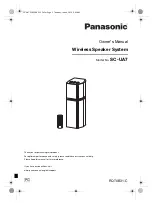
10 GB/IE/CY
Safety information / Assembling the welding shield / Preparing to weld
Safety notices specific to the
welding shield
Using a hot light source (e.g. lighter) always
check the welding shield is working properly
before starting to weld.
Welding splashes can damage the glass shield.
Replace damaged or scratched glass shields
immediately.
Promptly replace damaged or heavily soiled /
splashed components.
The equipment may only be operated by per-
sons who have turned 16.
Familiarise yourself with the safety instructions
for welding. Also refer to the safety instructions
of your welding equipment.
Always use the welding shield when welding.
Failure to use the shield may result in serious in-
juries to the retina.
Always wear protective clothing when welding.
Never use the welding shield without protective
glass, as the optics can otherwise be damaged.
Replace the protective glass early to ensure good
visibility and fatigue-proof working.
Tight and moist spaces
When working in tight, moist or hot spaces, use
insulating pads and intermediate layers in ad-
dition to gauntlet gloves made from leather or
other insulating materials to insulate the body
from earth.
When using welding equipment in electrically
dangerous conditions, e.g. in tight spaces from
conductive walls (kettles, pipes, etc.), in wet
spaces (soaking of work clothes), the output
voltages of the welding equipment may not be
higher than 48 Volts (rms value) in open loop.
Based on the output voltage this welding equip-
ment may be used in these conditions.
Protective clothing
Whilst working the welder must be protected
against rays and burns all over the body with
the appropriate clothing and face protection.
Remember the following steps:
- Put on protective clothing before welding.
- Put on gloves.
- Open windows or vent to ensure air supply.
- Wear safety goggles and a mask.
Wear gauntlet gloves made from suitable ma-
terial (leather) on both hands. These must be
in good condition.
Wear suitable aprons to protect the clothing
from sparks and burns. When required based
on the working method, e.g. welding overhead,
wear a protective suit and, if necessary, a head
guard.
Protecting against
rays and burns
Mark the work area with a sign “Danger! Do
not look into flames!“ to indicate the risk to the
eyes. If possible, shield the work areas to protect
persons nearby. Keep unauthorised persons
away from the welding area.
Walls in the direct vicinity of fixed work areas
should be neither light coloured nor glossy.
Protect windows against rays passing through
or reflecting at a minimum to head height, e.g.
with suitable paint.
Assembling the welding shield
Attach the handle
8
to the welding shield
7
as shown in Fig. B.
Install the protective glass
10
to the welding
shield
7
as shown in Fig. B.
Then fold the three sides of the welding shield.
The two sides each connect to the top with two
press studs.
Preparing to weld
Note:
When activating the power verify the current
indicator moves and the lead screw is not jammed.
Preparing to weld / Welding / Overheat protection
273439_Elektro-Schweissgeraet_PESG 120 B2_content_GB_IE_CY.indd 10
18.01.16 16:37











































